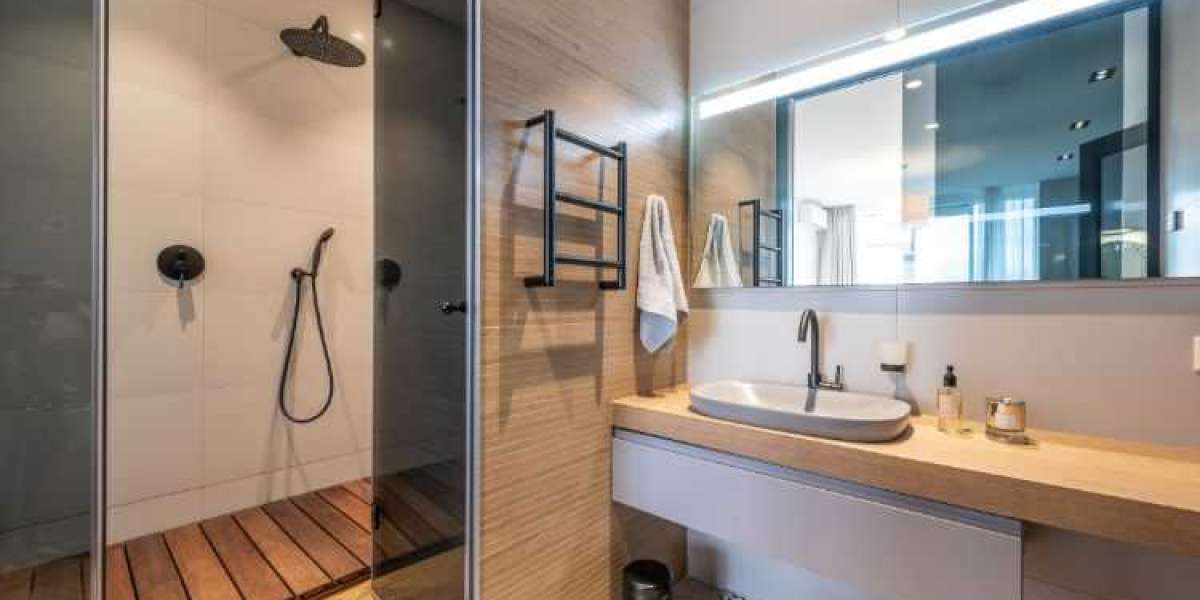The global Bathroom Furniture Market Size is experiencing significant growth, reflecting the evolving trends in home interior design and consumer preferences. As of 2023, the market has reached a value of approximately USD 68.19 billion and is projected to grow at a compound annual growth rate (CAGR) of 6.30% from 2024 to 2032, reaching an estimated value of USD 116.18 billion by 2032. This article provides an in-depth analysis of the bathroom furniture market, exploring key benefits, industry developments, driving factors, and the impact of COVID-19, while also addressing restraining factors, market segmentation, trends, and regional insights.
Market Overview
Bathroom furniture encompasses a wide range of products designed for use in the bathroom, including vanities, cabinets, mirrors, and storage solutions. The increasing focus on home aesthetics and functionality has driven demand for stylish and practical bathroom furniture. Key trends include the integration of technology, eco-friendly materials, and customizable designs.
Key Benefits
Enhanced Functionality: Modern bathroom furniture offers improved storage solutions and organizational features, maximizing space and efficiency in the bathroom.
Aesthetic Appeal: Stylish designs and contemporary finishes contribute to the overall aesthetics of the bathroom, enhancing the visual appeal of residential and commercial spaces.
Increased Property Value: Upgrading bathroom furniture can significantly boost the value of a property, making it a wise investment for homeowners looking to increase resale value.
Customization Options: Many manufacturers offer customizable solutions, allowing consumers to select furniture that best fits their specific needs and preferences.
Key Industry Developments
Technological Integration: The incorporation of smart technology in bathroom furniture, such as automated lighting and temperature control, is becoming increasingly popular.
Sustainability Initiatives: Companies are focusing on sustainable practices, including the use of eco-friendly materials and manufacturing processes.
Modular Designs: Modular and multi-functional furniture designs are gaining traction, offering versatility and adaptability for various bathroom sizes and styles.
Online Retail Expansion: The rise of e-commerce platforms has made it easier for consumers to access a wide range of bathroom furniture options, driving market growth.
Driving Factors
Increasing Urbanization: Rapid urbanization is leading to smaller living spaces, which drives demand for space-saving and multifunctional bathroom furniture.
Rising Disposable Income: Higher disposable incomes enable consumers to invest in premium and luxury bathroom furniture, fueling market growth.
Growing Renovation Activities: Home renovation projects, including bathroom upgrades, are a significant driver of demand for new and improved bathroom furniture.
Evolving Design Trends: The popularity of modern and contemporary bathroom designs is encouraging consumers to seek out stylish and innovative furniture solutions.
COVID-19 Impact
The COVID-19 pandemic has had a mixed impact on the bathroom furniture market. On one hand, the pandemic led to a temporary slowdown in manufacturing and supply chain disruptions. On the other hand, increased focus on home improvement and renovation during lockdowns contributed to a surge in demand for bathroom furniture. The market has since recovered and is expected to continue growing as consumers invest in enhancing their living spaces.
Restraining Factors
High Costs of Premium Products: The high cost of premium and luxury bathroom furniture may limit accessibility for some consumers, particularly in emerging markets.
Supply Chain Disruptions: Ongoing supply chain challenges, including raw material shortages and transportation issues, can affect production and distribution.
Economic Uncertainty: Economic fluctuations and uncertainties can impact consumer spending on non-essential home improvements, including bathroom furniture.
Market Segmentation
By Product Type:
- Vanities
- Cabinets
- Mirrors
- Storage Solutions
- Others
By Material:
- Wood
- Metal
- Glass
- Plastic
- Others
By End-User:
- Residential
- Commercial (Hotels, Offices, Public Restrooms)
By Distribution Channel:
- Online Retail
- Offline Retail (Specialty Stores, Hypermarkets)
Market Outlook
The bathroom furniture market is expected to continue its robust growth trajectory, driven by evolving consumer preferences, technological advancements, and increasing urbanization. The shift towards sustainable and eco-friendly products, coupled with the rise of smart home technology, is likely to shape the future of the market.
Trends
Smart Bathroom Furniture: The integration of smart technology, including voice-activated controls and touchless features, is becoming a key trend in bathroom furniture.
Eco-Friendly Materials: Consumers are increasingly seeking bathroom furniture made from sustainable and recyclable materials, reflecting a broader trend towards environmental responsibility.
Customizable Solutions: The demand for customizable and modular bathroom furniture is growing, allowing consumers to tailor products to their specific needs and preferences.
Minimalist Designs: Minimalist and space-saving designs are popular, particularly in urban areas where space is limited.
Regional Analysis/Insights
North America: The North American market is characterized by high demand for premium and luxury bathroom furniture. The growth is driven by rising disposable incomes and a strong focus on home improvement.
Europe: Europe is seeing increased adoption of sustainable and eco-friendly bathroom furniture. Countries like Germany and the UK are leading the market with innovative designs and advanced technologies.
Asia-Pacific: The Asia-Pacific region is experiencing rapid urbanization and growing middle-class populations, driving demand for modern and space-efficient bathroom furniture.
Latin America and Middle East Africa: These regions are witnessing gradual growth, with increasing investments in real estate and infrastructure contributing to market expansion.
Analysis
The global bathroom furniture market is influenced by a combination of technological, economic, and social factors. While the market faces challenges such as high costs and supply chain disruptions, the overall outlook remains positive. The emphasis on smart technology, sustainability, and customization is expected to drive growth and innovation in the sector.
News
Recent developments in the bathroom furniture market include the launch of new smart bathroom furniture lines, advancements in eco-friendly materials, and strategic partnerships between manufacturers and technology companies to enhance product offerings.
Top Impacting Factors
Technological Advancements: The integration of smart technology and innovative features in bathroom furniture is a major driving force.
Consumer Preferences: Evolving design trends and increasing demand for customization are shaping the market landscape.
Economic Conditions: Economic factors, including disposable income and spending patterns, impact market growth and consumer behavior.
Sustainability: The growing emphasis on eco-friendly products is influencing market dynamics and shaping consumer choices.
Major Key Players
- Inter IKEA Systems B.V.
- Villeroy Boch AG
- Duravit AG
- Foshan SHKL Sanitary Ware Co., Ltd
- Grohe AG
- Ideal Standard International NV
- Ceramica Catalano Spa
- Geberit ADR
- Roca Sanitario S.A.
- Cersanit S.A.
- Laufen Bathrooms AG
Opportunities
Expansion in Emerging Markets: There is significant potential for growth in emerging markets, driven by increasing urbanization and rising disposable incomes.
Innovation and Technology Integration: Opportunities exist in developing and incorporating advanced technologies and smart features into bathroom furniture products.
Sustainability Initiatives: The growing demand for eco-friendly and sustainable products presents opportunities for companies to differentiate themselves and capture market share.
Challenges
Supply Chain Issues: Ongoing disruptions and raw material shortages can impact production and distribution.
High Competition: The market is highly competitive, with numerous players vying for market share, necessitating continuous innovation and differentiation.
Economic Fluctuations: Economic uncertainties can influence consumer spending and investment in home improvement.
Scope
The scope of the bathroom furniture market encompasses a wide range of products and segments, including residential and commercial applications. The market is characterized by a focus on innovation, technology, and sustainability, with opportunities for growth driven by changing consumer preferences and evolving design trends.


